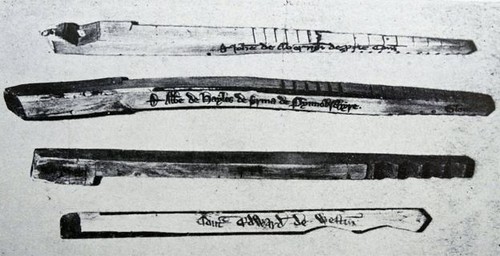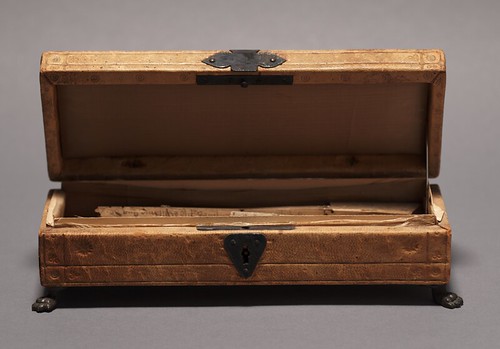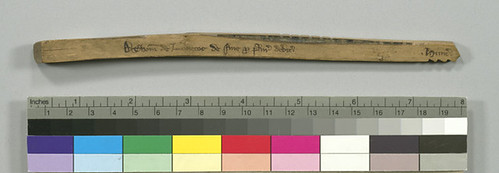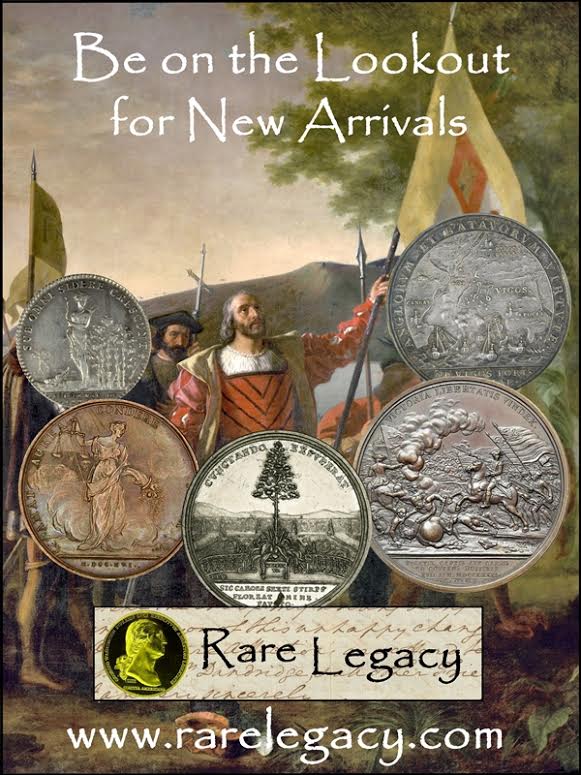
PREV ARTICLE
NEXT ARTICLE
FULL ISSUE
PREV FULL ISSUE
MEDIEVAL TALLY STICKS AND HOW THEY WORKEDArthur Shippee forwarded this BBC News article about Medieval tally sticks and how they illustrate an important aspect of how money still works today. Thanks! -Editor
 [A]s Felix Martin points out in his book, Money: The Unauthorised Biography, that most of our monetary history hasn't survived in a form that could grace a museum. In fact, in 1834, the British government decided to destroy 600 years of precious monetary artefacts. It was a decision that was to have unfortunate consequences in more ways than one. The artefacts in question were humble sticks of willow, about eight inches (20cm) long, called Exchequer tallies. The willow was harvested along the banks of the Thames, not far from the Palace of Westminster in central London. Tallies were a way of recording debts with a system that was sublimely simple and effective. The stick would contain a record of the debt, for example: "£9 4s 4d from Fulk Basset for the farm of Wycombe". Fulk Basset was a Bishop of London in the 13th Century. He owed his debt to King Henry III. Now comes the elegant part. The stick would be split in half, down its length from one end to the other. The debtor would retain half, called the "foil". The creditor would retain the other half, called the "stock" - even today, British bankers use the word "stocks" to refer to debts of the British government. Because willow has a natural and distinctive grain, the two halves would match only each other. Of course, the Treasury could simply have kept a record of these transactions in a ledger somewhere. But the tally stick system enabled something radical to occur. If you had a tally stock showing that Bishop Basset owed you £5, then unless you worried that he wasn't good for the money, the tally stock itself was worth close to £5 in its own right. If you wanted to buy something, you might well find that the seller would be pleased to accept the tally stock as a safe and convenient form of payment. So the tally sticks themselves became a kind of money, a particular sort of debt that could be traded freely, circulating from person to person until it utterly separated from Bishop Basset and a farm in Wycombe. Be sure to read the rest of the article online; it goes on to recount a marvelous story of how the Irish used checks to cope with a widespread bank closure in 1970, and how 1950s
Hong Kong merchants also made use of checks as a form of privte money. -Editor
To read the complete article, see:
This is a fascinating topic, whci has only come up a couple times before in The E-Sylum. Here's another article about tally sticks from the Mathematical Association of
America. -Editor
 Notched pieces of wood or bone were used by many ancient peoples to record numbers. The most common type of these “tally sticks” was made of wood. Tally sticks served as records or receipts for financial transactions such as the payment of taxes, debts and fines. From the 12th century onward tally sticks were officially employed by the Exchequer of England to collect the King’s taxes. Local sheriffs were given the task of actually collecting the taxes. The depth and series of notches on these sticks represented the value of the transaction. In recording a debt, a wooden stick was often split horizontally into two parts: the lender receiving one part, the stock; and the debtor, the other part, the foil. This box contains sticks that date from the year 1296 and were found in the Chapel of the Pyx, Westminster Abbey in 1808. England abolished the use of tally sticks in 1826. The accumulation of tally sticks in the Office of the Exchequer were burned in 1834 resulting in a fire that destroyed the Parliament Building.   To read the complete article, see:
To read the earlier E-Sylum articles, see:
 Wayne Homren, Editor The Numismatic Bibliomania Society is a non-profit organization promoting numismatic literature. See our web site at coinbooks.org. To submit items for publication in The E-Sylum, write to the Editor at this address: whomren@gmail.com To subscribe go to: https://my.binhost.com/lists/listinfo/esylum All Rights Reserved. NBS Home Page Contact the NBS webmaster 
|